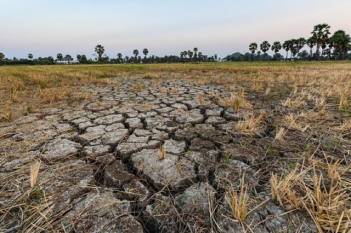NEW DELHI, 15 September 2024: Land degradation is a critical issue affecting agricultural productivity, food security, and environmental sustainability. It results from a combination of natural processes and human activities, including deforestation, overgrazing, soil erosion, and unsustainable farming practices. Restoring and preserving arable land is essential for ensuring long-term agricultural viability and environmental health.
This article explores the causes of land degradation and presents strategies for restoring and preserving arable land.
Causes of Land Degradation
- Deforestation
Clearing forests for agriculture or urban development leads to soil erosion, loss of biodiversity, and disruption of water cycles. The removal of tree cover reduces the land’s ability to retain moisture and increases susceptibility to erosion.
- Soil Erosion
Soil erosion, caused by wind and water, removes the topsoil layer that is rich in nutrients. This process depletes soil fertility and reduces land productivity. Factors contributing to soil erosion include improper tillage, overgrazing, and deforestation.
- Overgrazing
Excessive grazing by livestock depletes vegetation cover, leading to soil compaction and erosion. Overgrazing reduces the land’s ability to recover and can lead to desertification in severe cases.
- Unsustainable Farming Practices
Practices such as monoculture, excessive use of chemical fertilizers and pesticides, and improper irrigation can degrade soil health. These practices lead to nutrient depletion, soil acidity, and contamination of water sources.
- Urbanization and Infrastructure Development
Urban expansion and infrastructure development can lead to the conversion of arable land into non-agricultural uses. This loss of land reduces the area available for food production and impacts local ecosystems.
- Climate Change
Climate change affects land degradation through increased temperatures, altered precipitation patterns, and more frequent extreme weather events. These changes can exacerbate soil erosion, reduce soil fertility, and impact water availability.
Strategies for Restoring and Preserving Arable Land
- Reforestation and Afforestation
- Reforestation: Planting trees in deforested or degraded areas can help restore soil health, improve water retention, and enhance biodiversity. Reforestation projects can also reduce carbon dioxide levels and mitigate climate change impacts.
- Afforestation: Establishing forests on previously non-forested land can prevent soil erosion, increase groundwater recharge, and provide habitat for wildlife. Afforestation efforts should focus on selecting appropriate species and ensuring long-term management.
- Erosion Control Measures
- Contour Plowing: Plowing along the contours of the land helps reduce soil erosion by slowing water runoff and promoting water infiltration. This practice can prevent the loss of topsoil and improve soil fertility.
- Terracing: Constructing terraces on sloped land creates flat areas that reduce soil erosion and improve water retention. Terracing is effective for growing crops on hilly terrain and preventing landslides.
- Cover Cropping: Planting cover crops, such as legumes or grasses, between main crops helps protect the soil from erosion, improve soil structure, and enhance nutrient content. Cover crops also contribute to organic matter in the soil.
- Sustainable Farming Practices
- Conservation Tillage: Reducing tillage or adopting no-till practices helps maintain soil structure, reduce erosion, and increase organic matter. Conservation tillage also improves water retention and reduces soil compaction.
- Crop Rotation: Rotating crops helps prevent soil depletion, manage pests and diseases, and improve soil fertility. Different crops contribute varying nutrients to the soil and reduce the risk of soil degradation.
- Organic Farming: Using organic farming methods, such as composting and natural pest control, improves soil health and reduces dependence on chemical fertilizers and pesticides. Organic farming practices enhance soil fertility and promote biodiversity.
- Improved Irrigation Practices
- Drip Irrigation: Drip irrigation delivers water directly to the plant roots, minimizing water wastage and reducing soil erosion. This method improves water use efficiency and helps maintain soil moisture.
- Rainwater Harvesting: Collecting and storing rainwater for irrigation can reduce reliance on groundwater and ensure a more sustainable water supply. Rainwater harvesting systems can be integrated into farming practices to enhance water availability.
- Soil Conservation and Restoration
- Soil Testing and Amendments: Regular soil testing helps determine soil nutrient levels and identify deficiencies. Applying soil amendments, such as lime or organic matter, can improve soil fertility and restore soil health.
- Rehabilitation of Degraded Lands: Implementing land rehabilitation techniques, such as replanting vegetation, restoring soil fertility, and controlling erosion, can help recover degraded lands. Rehabilitation projects should focus on restoring ecological balance and improving land productivity.
- Community-Based Approaches
- Participatory Land Management: Involving local communities in land management decisions ensures that restoration efforts are culturally appropriate and tailored to local needs. Community-based approaches can enhance the effectiveness of restoration projects and foster local stewardship.
- Education and Awareness: Raising awareness about land degradation and promoting sustainable land management practices through education and outreach can encourage farmers and landowners to adopt conservation measures.
- Policy and Governance
- Land Use Planning: Implementing effective land use planning policies can prevent the conversion of arable land into non-agricultural uses. Land use planning should balance development needs with agricultural and environmental priorities.
- Support for Sustainable Practices: Governments and institutions can provide incentives and support for adopting sustainable land management practices. Financial assistance, technical support, and research initiatives can help promote conservation efforts.
- Research and Innovation
- Investing in Research: Supporting research on land degradation, soil conservation, and sustainable agriculture can lead to the development of new technologies and practices. Research findings can inform policy decisions and guide restoration efforts.
- Innovative Technologies: Utilizing innovative technologies, such as remote sensing, GIS, and soil sensors, can improve land management and monitoring. These technologies provide valuable data for assessing land health and guiding restoration strategies.
Case Studies and Success Stories
- The Loess Plateau Rehabilitation Project in China
The Loess Plateau Rehabilitation Project has successfully restored degraded land through reforestation, terracing, and sustainable farming practices. The project has improved soil fertility, reduced erosion, and increased agricultural productivity, benefiting local communities.
- The Green Belt Movement in Kenya
The Green Belt Movement, founded by Wangari Maathai, focuses on reforestation and environmental conservation in Kenya. The movement has planted millions of trees, restored degraded lands, and promoted sustainable land management practices.
- The Soil and Water Conservation Program in Ethiopia
Ethiopia’s Soil and Water Conservation Program has implemented various erosion control measures, such as terracing and check dams, to combat land degradation. The program has improved soil health, increased crop yields, and enhanced water availability in affected areas.
-
The Sustainable Land Management Program in India
India’s Sustainable Land Management Program supports soil conservation, agroforestry, and improved irrigation practices. The program has helped restore degraded lands, improve soil fertility, and increase agricultural productivity in several regions.
Land degradation poses significant challenges to agricultural productivity, food security, and environmental sustainability. By implementing strategies such as reforestation, erosion control, sustainable farming practices, improved irrigation, and community-based approaches, it is possible to restore and preserve arable land.
Collaborative efforts involving farmers, communities, governments, and research institutions are essential for addressing land degradation and ensuring the long-term health and productivity of our land resources. Investing in restoration and conservation efforts will contribute to a more resilient and sustainable agricultural system for future generations.
Image credit: iastoppers.com























